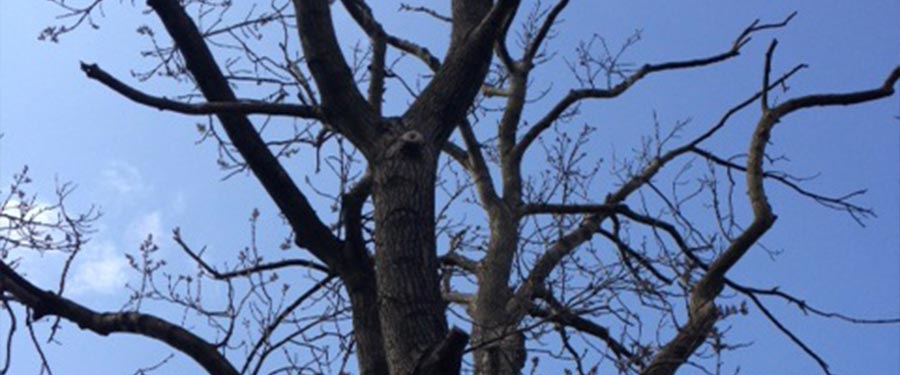We have 157,000 hectares of ash woodland in the UK, together with approximately 12 million ash trees outside the woodlands in gardens, parklands and along roadsides. These ash trees are associated with and support 1,000 different species, including 12 species of bird, 55 species of mammals and 239 species of invertebrates. But ash trees are now under attack from a deadly enemy – a fungus called Hymenoscyphus fraxineus (previously Chalara fraxinea). This fungal pathogen kills the leaves, then the branches and trunk and eventually the whole tree dies. Ash dieback, as this deadly disease is known, originated in Asia but is spreading across Europe.
Ash dieback was first seen in Eastern Europe in 1992 and it now affects more than 2 million square kilometres from Scandinavia to Italy. The disease was first found in the UK in 2012 and has since spread from Norfolk and Suffolk to South Wales.
Recent evidence suggests that ash dieback could wipe out all ash trees across Europe unless action is taken. But the fight back has begun. An inter-institutional/university research effort called Nornex has been set up, comprising scientists from 11 research institutes, with the aim to learn more about this disease and how to tackle it.
As part of the Nornex project, research led by scientists from the Centre of Novel Agricultural Products (CNAP) at York University, have developed a novel DNA testing technique to screen ash tree susceptibility to the pathogen. The team sequenced the genes of a population of ash trees which showed a diverse susceptibility to ash dieback. They were then able to identify gene markers which correlated with low susceptibility to ash dieback disease. These gene markers were then successfully used to screen trees and identify those with a tolerance to the pathogen.
Professor Ian Bancroft of the CNAP said, “Tree disease epidemics are a global problem, impacting food security, biodiversity and national economies. The approach we have used has never previously been used to screen for disease-resistant plants and in principle could be applied to identify disease tolerance in other species of trees that are currently being threatened by a range of tree pests and pathogens.”
Using this DNA testing technique scientists hope to identify trees with a tolerance to this pathogen, which they could then cross breed to produce progeny that have a high pathogen tolerance and could grow even if infected.
The tree-scape of the UK and the biodiversity that it supports could be lost forever if the ash trees succumb to this deadly disease. But this work is a significant step towards saving of ash trees.
For further information, please see: http://nornex.org

